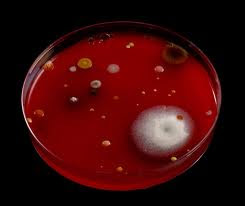Abraham
Maslow developed the Hierarchy of Needs model in 1940-50s USA, and the
Hierarchy of Needs theory remains valid today for understanding human
motivation, management training, and personal development.
Indeed, Maslow's
ideas surrounding the Hierarchy of Needs concerning the responsibility of
employers to provide a workplace environment that encourages and enables
employees to fulfil their own unique potential (self-actualization) are today
more relevant than ever. Abraham Maslow's book Motivation and Personality,
published in 1954 (second edition 1970) introduced the Hierarchy of Needs, and
Maslow extended his ideas in other work, notably his later book Toward A
Psychology Of Being, a significant and relevant commentary, which has been
revised in recent times by Richard Lowry, who is in his own right a leading
academic in the field of motivational psychology.
Each of
us is motivated by needs. Our most basic needs are inborn, having evolved over
tens of thousands of years. Abraham
Maslow's Hierarchy of Needs helps to explain how these needs motivate us all.
Maslow's
Hierarchy of Needs states that we must satisfy each need in turn, starting with
the first, which deals with the most obvious needs for survival itself.
Only
when the lower order needs of physical and emotional well-being are satisfied
are we concerned with the higher order needs of influence and personal
development.
Conversely,
if the things that satisfy our lower order needs are swept away, we are no longer
concerned about the maintenance of our higher order needs.
Maslow's
original Hierarchy of Needs model was developed between 1943-1954, and first
widely published in Motivation and Personality in 1954. At this time the
Hierarchy of Needs model comprised five needs. This original version remains
for most people the definitive Hierarchy of Needs.
Maslow's hierarchy of needs
1. Biological
and Physiological needs - air, food, drink, shelter, warmth, sex, sleep,
etc.
2. Safety
needs - protection from elements, security, order, law, limits, stability,
etc.
3. Belongingness
and Love needs - work group, family, affection, relationships, etc.
4. Esteem
needs - self-esteem, achievement, mastery, independence, status,
dominance, prestige, managerial responsibility, etc.
5. Cognitive
needs - knowledge, meaning, etc.
6. Aesthetic
needs - appreciation and search for beauty, balance, form, etc.
7. Self-Actualization
needs - realising personal potential, self-fulfillment, seeking personal
growth and peak experiences.
8. Transcendence
needs - helping others to achieve self actualization
















.jpg)

